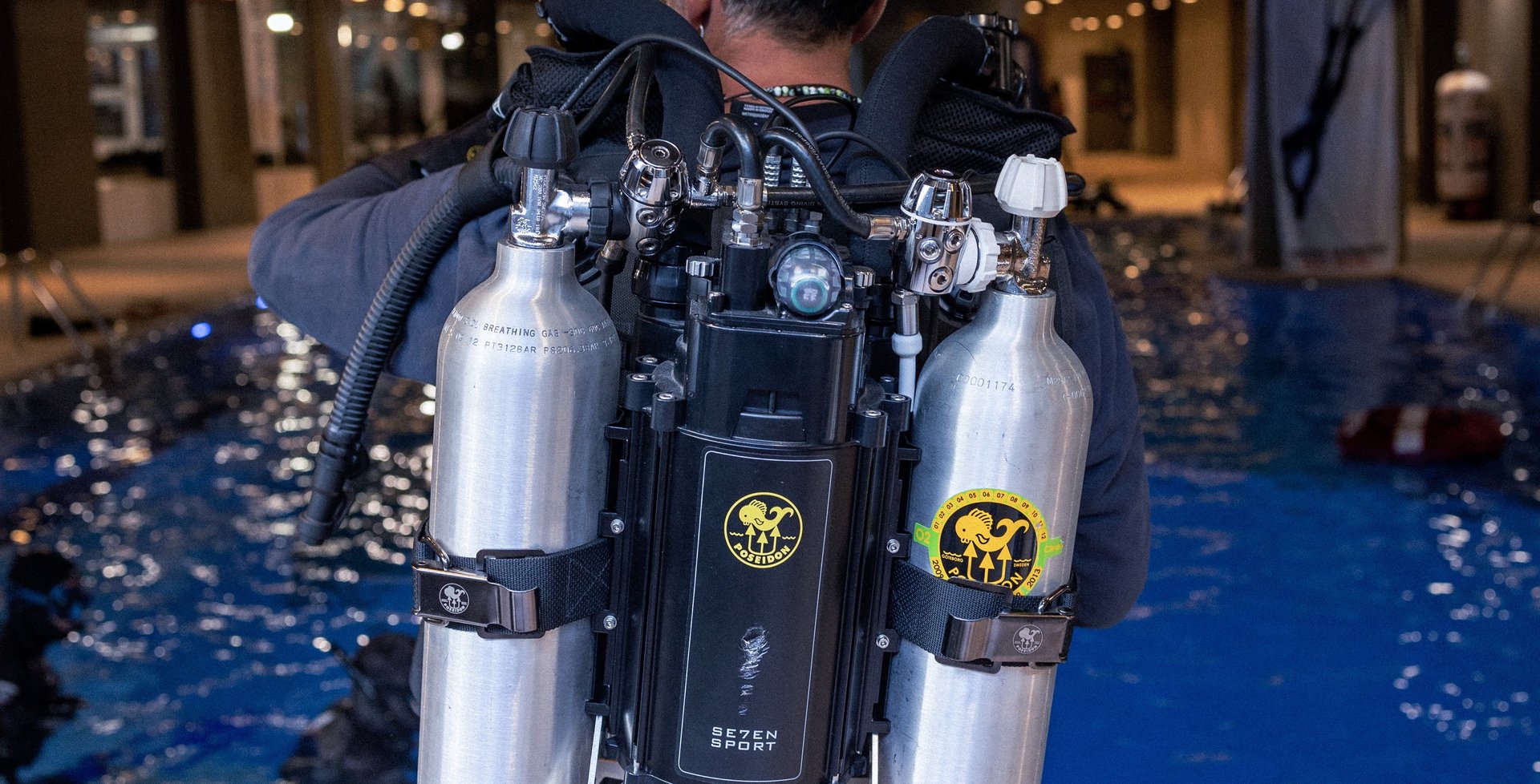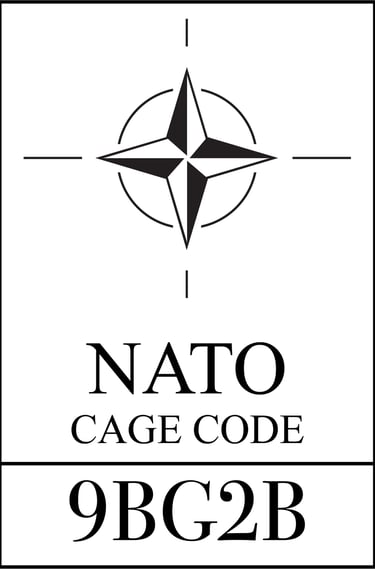
CCR 30
CCR DIVER 30 COURSE
The POSEIDON CCR Diver 30 Course is an entry-level program designed to introduce divers to the world of rebreathers, with a specific focus on the Poseidon Se7en units.
The course covers rebreather functionality, types of systems, equipment assembly, pre-dive check procedures, in-water skills, emergency protocols, as well as disassembly and maintenance.
This training complies with ISO 24804 international standards and is certified directly by POSEIDON through the POSEIDON PRO ACADEMY, ensuring high-quality instruction aligned with the brand’s standards.
PREREQUISITES
Be at least 18 years of age.
Hold an Advanced Open Water Diver certification issued by an international organization recognized by Poseidon.
Hold a Nitrox 40 Specialty certification issued by an international organization recognized by Poseidon.
Have a minimum of 20 documented decompression dives recorded in the diver’s logbook.
Submit a valid Medical Statement.
Hold mandatory dive accident insurance covering dives up to 30 meters and the use of CCR (Closed Circuit Rebreather)
COURSE PLANNING
The POSEIDON CCR DIVER 30 course is conducted over four (4) days. It includes a first day dedicated to theory, equipment assembly, pre-dive checks, land drills, and one (1) confined water dive. The remaining three (3) days involve open water diving with a minimum of six (6) dives and at least 420 minutes of in-water rebreather use.
SCHEDULE
DAY 1
Theory Session 1
Theory Session 2
POSEIDON CCR configuration workshop
Confined Water Dive
DAY 2
Dives 1 & 2
DAY 3
Dives 3 & 4
DAY 4
Dives 5 & 6
THEORY TOPICS
History of CCR and Rebreathers
POSEIDON CCR evolution
How a CCR works
Types of rebreathers:
SCR
CCR
mCCR
eCCR
SSR
CCR configurations:
Backmount
Chest mount
Sidemount
POSEIDON CCR mechanics:
Assembly/disassembly
Checklists
Unit design overview
Canister and Sofnolime
Loop, BOV, minimum/optimal loop volume
Gas physiology:
Oxygen risks (hypoxia, hyperoxia)
CO2 toxicity (hypercapnia)
Nitrogen absorption
Benefits of Trimix with 20% O₂ and 35% He
Canister filling
Manual vs electronic systems
O₂ metabolism calculations
O₂ sensors and calibration
Dive planning and constant PO₂ theory
CNS and OTU management
Dive computers:
Gas mix settings
Constant PO₂
Gradient factors/conservatism
Integrated O₂
Dive planning:
Operational planning
Gas consumption
Canister duration
Gas requirements including bailout scenarios
O₂ and N₂ exposure limits
Emergency procedures:
Flooded loop
Cell/battery/electronic failures
SKILL DEVELOPMENT
Pre-dive checks & checklists
Unit setup and canister filling
Loop verification:
Non-return valves
Positive/negative pressure checks
O₂ and Diluent gas analysis
Dive planning:
System performance limits
PO₂-based exposure limits
N₂ absorption at planned depth & setpoint
Gradient factors and conservatism
Thermal considerations
Familiarization with BOV
Bubble checks (3–6m stop)
Adjusting OPV and counterlungs
Emergency procedures:
Bailout transitions
Gas loss/malfunction scenarios
Hose or loop damage
Flooded canister
CO₂ buildup
Low/high O₂
Electronic/battery failure
Switching to open circuit
Rescue techniques
Buoyancy control
Manual PO₂ control and HUD use
Dive computer navigation
DSMB deployment
Mask removal/replacement
Dive execution within limits
Performing safety stops
Maintaining loop volume
Sensor checks using O₂ and diluent
Post-dive cleaning:
BOV and hoses
Unit disinfection
Component inspection and maintenance
Cell replacement
Battery charging
Dive logging via POSEIDON REEF App
DEPTH LIMITS
At least two (2) dives must exceed 20 meters
All dives are limited to a maximum depth of 30 meters
RATIO
Minimum group: 2 students
Maximum group: 3 students
COURSE PRICE: 999€
INCLUDED
Learning materials + exam
All theory sessions
Minimum of 1 confined water dive
Minimum of 6 open water dives
POSEIDON International Certification
NOT INCLUDED
RSTC Agency Certification Price
Student accommodation
Student meals
Student expenses:
Gas fills (each student pays theirs directly at the dive center)
Boat dives (paid directly at the dive center)
Pool rental (each student pays their own share)
Instructor expenses (to be split among students):
Instructor gas fills
Boat dives
Pool rental
Instructor travel (fuel, tolls)
Instructor accommodation
Instructor meals
VAT
EQUIPMENT RENTAL IF NECESSARY
POSEIDON Se7en+ CCR Rental: 249€ per person/course
POSEIDON M28 Bailout Computer: 10€/day
Stage Cylinder Rental: 10€/day
POSEIDON Stage Regulator: 10€/day
Sodalime: 10€/kg
AFTER THE COURSE
Upon successful completion, you'll be certified to dive with the POSEIDON Se7en without direct or indirect supervision with other CCR divers, to a maximum depth of 30 meters, in no-decompression dives.
You can then continue your progression with the next level:
CONTACT US
Have any questions or need assistance? Our team is here to help you with all your inquiries. Whether you’re looking for more details about our products, services, or need support, feel free to reach out. We’ll get back to you as soon as possible!




